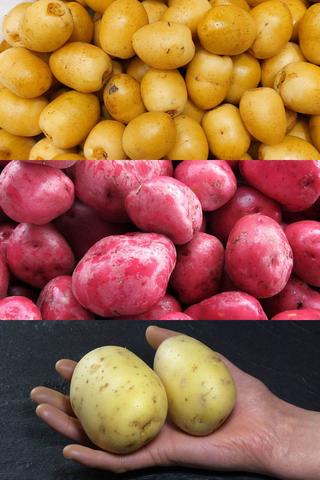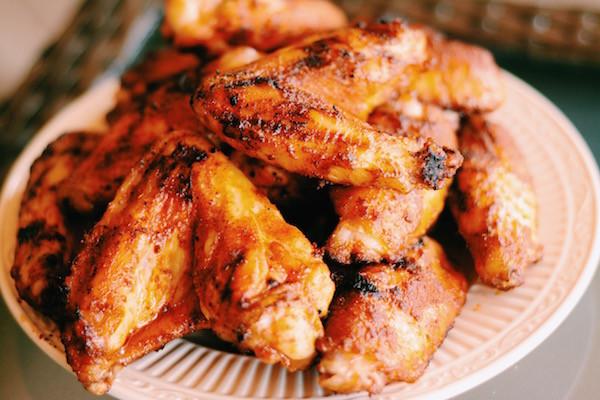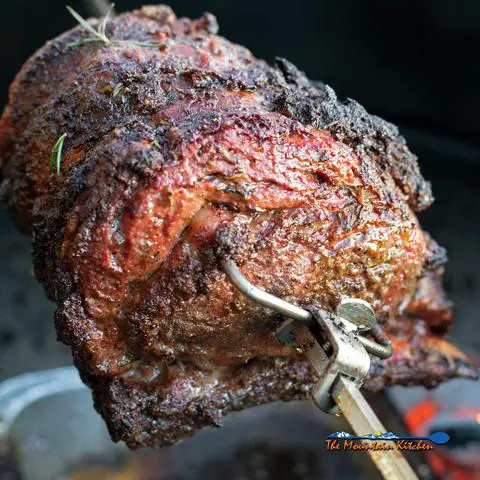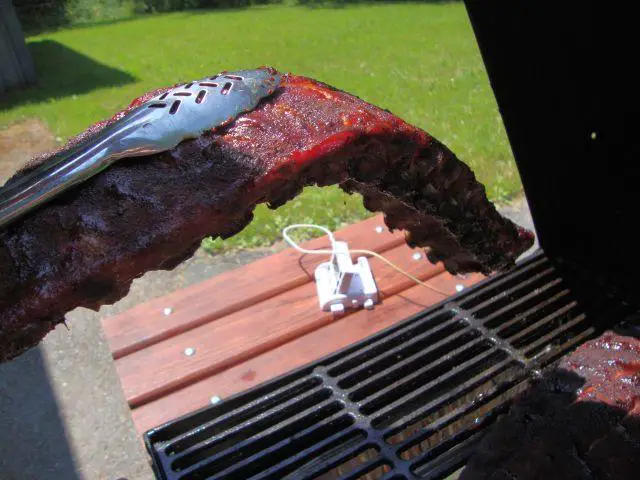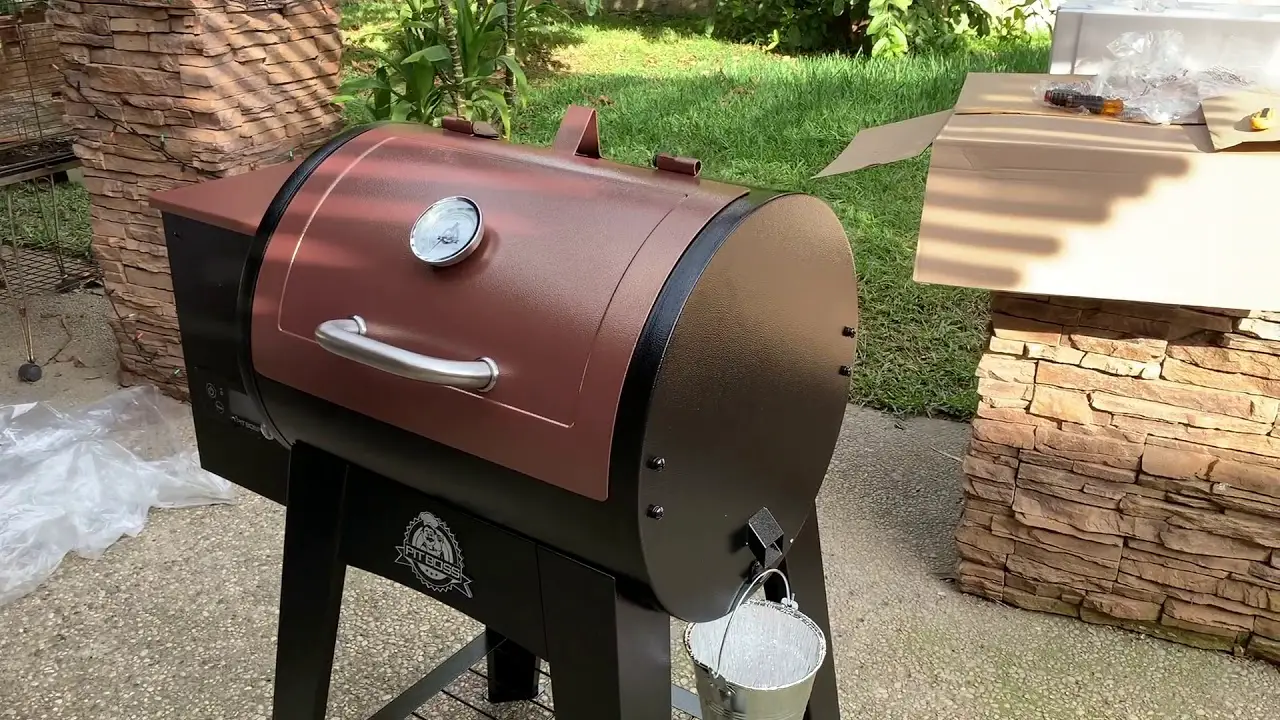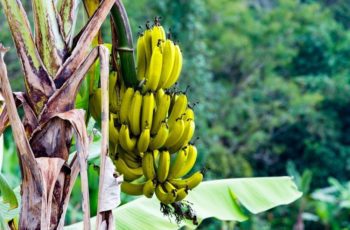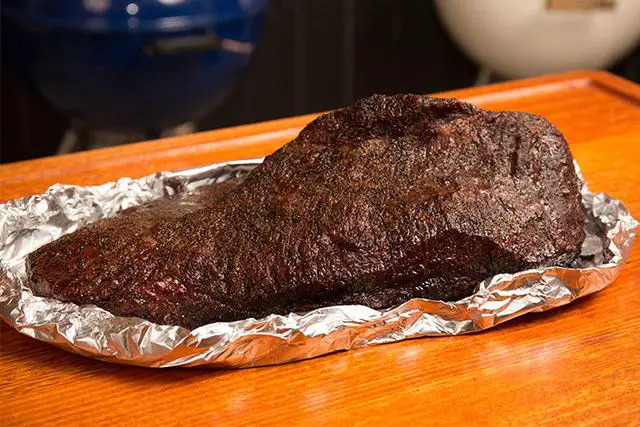
“Mastering the Art: Discover the Optimal Temperature to Perfectly Wrap Brisket for Unparalleled Flavor and Tenderness!”
Why Do WeWrap Brisket?
There are several reasons why we wrap brisket when smoking it. First, wrapping the brisket helps speed up the cooking process by helping it get through the stall, which is when the internal moisture evaporates and cools the brisket. Wrapping also helps keep the brisket moist by locking in moisture and shielding it from too much heat.
Another reason for wrapping brisket is to prevent over-smoking. Too much smoke can make the barbecue bitter or overpower other flavors. Wrapping the brisket acts as a barrier and prevents excessive smoke from penetrating the meat.
Lastly, wrapping brisket allows the juices to redistribute throughout the meat and keeps it ready for serving. It pre-wraps the brisket, making it easier to hold and maintain its juiciness until it is ready to be served.
What Is TheStall?
The stall refers to a period during the smoking process where the internal temperature of the brisket plateaus or stops rising. This usually occurs between 150°F and 180°F (65.6°C to 76.7°C). During this time, the moisture in the brisket is migrating to the surface and evaporating, which cools down the meat. The stall can last for several hours, making it a crucial point in the cooking process.
While it may induce panic for first-time smokers, it is important to resist the urge to increase smoker temperatures or rush through this stage. The stall is a natural part of smoking brisket and allows for collagen breakdown, resulting in tender meat. It is an essential phase that should not be skipped.
WhatInternal TempToWrap Brisket?

When it comes to deciding the internal temperature at which to wrap brisket, it is recommended to do so when the brisket reaches the stall. The stall typically occurs between 150°F and 180°F (65.6°C to 76.7°C). At this point, you should visually check the bark of the brisket as well. The bark should have a dark color, mostly dark brown with some deep, dark red. Once you are satisfied with the bark and the brisket has reached the desired temperature range, you can proceed to wrap it.
Wrapping the brisket at this stage helps speed up the cooking process by assisting in getting through the stall. It also helps retain moisture and prevents over-smoking of the meat. By wrapping, you create a barrier that locks in moisture and shields the brisket from excessive heat. Additionally, when done cooking, a pre-wrapped brisket allows juices to redistribute throughout the meat, keeping it moist and ready for serving.
What Should IWrapMy Brisket In?

When it comes to wrapping brisket, there are two main options: aluminum foil and butcher paper. Both have their pros and cons, so it ultimately comes down to personal preference.
Aluminum foil is a common choice for wrapping brisket because it helps speed up the cooking process by trapping moisture and reflecting heat. It creates a tight seal that prevents moisture evaporation and can prevent the brisket from drying out or burning. However, one downside is that the moisture trapped in the foil can make the bark soggy.
Butcher paper, specifically untreated pink butcher paper, is an alternative to foil that allows the brisket to pass through the stall quickly without making the bark too mushy. Although it doesn’t create as tight of a seal as foil, you can overlap the edges of the paper to create a tighter seal. Butcher paper is also versatile and can be used in other situations like lining barbecue trays or wrapping leftovers.
In conclusion, both aluminum foil and butcher paper are valid options for wrapping brisket, so choose based on your personal preference and desired outcome for your bark.
Wrapping BrisketIn Foil
Wrapping brisket in foil is a popular method that many barbecue enthusiasts use. When you wrap the brisket with a tight seal, the foil prevents moisture evaporation, helping the brisket pass through the temperature range of the stall more quickly. The foil also reflects heat, preventing the brisket from burning or drying out.
However, there are some drawbacks to wrapping brisket in foil. One potential issue is that all the moisture stays trapped inside, which can make the bark soggy. Additionally, using foil can result in a softer and less crispy bark compared to other wrapping methods.
If you choose to wrap your brisket in foil, it’s recommended to use heavy-duty 18″ wide foil for better durability and insulation. Make sure to tightly seal the foil around the brisket to prevent any leaks or air pockets.
Wrapping BrisketIn Butcher Paper
Butcher paper is an alternative to aluminum foil when it comes to wrapping brisket. It helps the brisket get through the stall quickly, but it doesn’t trap moisture the same way as foil, resulting in a less soggy bark. However, it’s important to use the correct type of butcher paper that is safe for use in a smoker. Look for untreated pink butcher paper, also known as peach butcher paper, which can handle the temperatures of your smoker without any harmful chemicals.
When using butcher paper to wrap your brisket, ensure that the edges of the paper overlap to create a tight seal. This will prevent any flapping around in the smoker and help retain moisture. Although pink butcher paper may not be as widely available as foil, it offers versatility and can be used in various situations where foil wouldn’t be suitable, such as lining barbecue trays or wrapping leftovers.
Aaron Franklin, a renowned brisket master from Franklin Barbecue, uses pink butcher paper to wrap his briskets. While it may take slightly longer than using foil due to its looser fit, many barbecue enthusiasts prefer this method for its ability to preserve bark texture while still speeding up the cooking process during the stall.
How To Properly Wrap A Brisket
1. Wait for the stall and check the bark: Before wrapping your brisket, wait for the temperature to reach the stall range of 150°F to 170°F (65.6°C to 76.7°C). At this point, visually check the bark of the brisket. It should be dark brown with some deep, dark red.
2. Choose your wrapping material: You have two main options for wrapping your brisket – aluminum foil or pink butcher paper. Aluminum foil helps speed up the cooking process by trapping moisture and reflecting heat, but it can make the bark soggy. Pink butcher paper allows for quicker cooking without sacrificing bark texture, but it doesn’t provide as tight of a seal as foil.
3. Wrap tightly: Whether using aluminum foil or pink butcher paper, make sure to wrap your brisket tightly to retain moisture and prevent drying out. For aluminum foil, use heavy-duty 18″ wide foil, while for pink butcher paper, overlap the edges to create a tight seal.
4. Monitor internal temperature and texture: Throughout the cooking process, monitor the internal temperature of your brisket using a leave-in probe thermometer or instant-read thermometer. Start checking for tenderness around 190°F (87.8°C) and continue checking every 15-20 minutes until reaching an internal temperature of 200°F (93.3°C) and desired texture.
5. Rest in a cooler: Once your brisket reaches its desired texture and internal temperature, remove it from the smoker and let it rest in a cooler for at least one hour (preferably two hours) before serving.
Experiment with different wrapping methods and materials to find what works best for your personal preference in terms of bark appearance and overall cooking process.
How Long Should I BeCooking BrisketAfter Wrapping?
After you wrap your brisket, the cooking time can vary depending on several factors such as the size of the brisket, cooking temperature, and personal preference. Generally, you can expect to cook a wrapped brisket for an additional 1-2 hours per pound of meat. This means that if you have a 10-pound brisket, it may take anywhere from 10 to 20 hours to cook after wrapping.
However, it’s important to note that cooking times are not set in stone and can vary. The best way to determine if your brisket is done is by monitoring its internal temperature using a meat thermometer. You’ll want to cook the brisket until it reaches an internal temperature of around 203°F (95°C) for tender and juicy results. Additionally, you should check for the desired tenderness by inserting a probe or fork into the meat and ensuring it goes in with little resistance.
WrappingIt Up (Yes Lame Pun Intended)
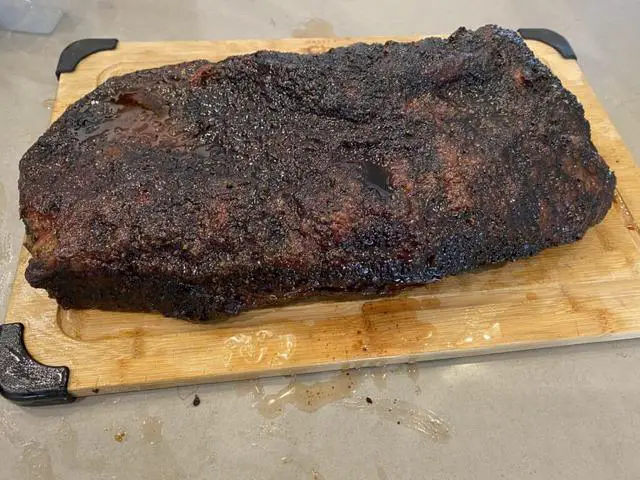
In conclusion, when it comes to wrapping brisket, the general consensus is to wrap it during the stall after the bark has formed to your liking. Wrapping can help speed up the cooking process, retain moisture, and prevent over-smoking. The stall occurs when the brisket’s internal moisture evaporates and cools the meat, causing the internal temperature to plateau. Wrapping in either aluminum foil or pink butcher paper are popular options.
Aluminum foil is readily available and helps power through the stall by trapping moisture close to the surface. However, it can make the bark soggy. On the other hand, pink butcher paper allows for quicker passage through the stall without compromising the texture of the bark. It does require a tight seal to be effective.
When determining when to wrap brisket, look for a temperature range of 150°F to 170°F and visually inspect the bark for a dark color. Use a leave-in probe thermometer to monitor internal temperatures and check for tenderness starting around 190°F. Once done, hold the wrapped brisket in a cooler for at least one hour before serving.
Ultimately, personal preference plays a role in deciding how you want your brisket’s bark to look and whether or not you choose to wrap it. Experimenting with different methods can help you find what works best for you.
FAQs:

Q: Can I wrap a brisket from the beginning?
A: Technically, you can wrap a brisket from the beginning, but it is not recommended. Wrapping the brisket too early can prevent the bark from developing properly and result in a softer, lightly-colored exterior. It may also affect the smoky flavor of the brisket.
Q: Should I wrap brisket before or after the stall?
A: It is recommended to wrap the brisket during the stall, after you are happy with how the bark has developed. The stall occurs when the internal moisture of the brisket evaporates, causing a cooling effect. Wrapping during this stage helps speed up the cooking process and keeps the brisket moist.
Q: Can you wrap brisket in parchment paper?
A: While aluminum foil and butcher paper are more commonly used for wrapping briskets, you can also use parchment paper. However, parchment paper may not provide as tight of a seal as foil or butcher paper, so your smoking session may take longer. Make sure to use uncoated parchment paper that is safe for use in a smoker.
Question: Can youwrapa brisket too early?
Question: Can you wrap a brisket too early?
Answer: Yes, you can wrap a brisket too early. If you wrap the brisket before the bark has developed, it will result in a soft and lightly-colored exterior. This means that the brisket may not have a smoky flavor and may not provide the full brisket experience. It is important to wait for the stall and for the bark to reach the desired appearance before wrapping the brisket.
Wrapping the brisket too early can also prevent proper moisture evaporation and hinder the development of a crispy bark. This can result in a mushy texture and less flavorful bark on your brisket. To ensure optimal results, it is recommended to wait until you are happy with the appearance of the bark before wrapping your brisket.
Question: Can Iwrapa brisket from the beginning?
Question: Can I wrap a brisket from the beginning?
Answer: Technically, you can wrap a brisket from the beginning of the cooking process. However, it is not recommended if you want to develop a good bark on your brisket. Wrapping it too early will result in a soft, lightly-colored exterior and may affect the smoky flavor. It is best to wait until the brisket reaches the stall and the bark has developed before wrapping it.
Wrapping the brisket during the stall helps speed up the cooking process and keeps it moist. It prevents moisture evaporation and shields the brisket from excessive heat. This helps prevent drying out or over-smoking of the meat. Wrapping also allows for easier holding and redistribution of juices throughout the meat after cooking.
In conclusion, while you can technically wrap a brisket from the beginning, it is recommended to wait until after the stall and when the bark has developed for optimal results.
Question: Is 150 too early towrap brisket?
Question: Is 150 too early to wrap brisket?
Wrapping brisket too early, specifically at 150°F (65.6°C), can result in a less desirable outcome. At this stage, the bark on the brisket may not have fully developed, leading to a softer and lighter-colored exterior. Additionally, wrapping the brisket too early may limit the smoky flavor that develops during the smoking process. While the meat will still be tender and juicy, it may lack the full brisket experience that comes with proper bark formation.
It is recommended to wait for the stall and for the bark to reach your desired color before wrapping the brisket. This usually occurs between 150°F and 170°F (65.6°C to 76.7°C). By allowing the bark to develop fully before wrapping, you can achieve a more flavorful and visually appealing end result.
Question: Can youwrapa brisket at 180 degrees?
Question: Can you wrap a brisket at 180 degrees?
Answer: Yes, you can wrap a brisket at 180 degrees Fahrenheit. However, it is important to note that wrapping the brisket at this temperature may result in a lighter bark and potentially less smoky flavor. Wrapping at a higher temperature, such as during the stall around 150-170 degrees Fahrenheit, allows for more time for the bark to develop and the flavors to penetrate the meat. Ultimately, the decision of when to wrap your brisket depends on your personal preference for bark color and flavor intensity.
In conclusion, wrapping your brisket during the stall after the bark has developed to your desired color is recommended. This helps speed up the cooking process, retain moisture, and prevent over-smoking. You can choose to wrap your brisket in either aluminum foil or pink butcher paper, each with their own pros and cons. Monitoring internal temperature and texture is crucial in determining when your brisket is done. Experimenting with different wrapping methods and finding what works best for you will result in a deliciously cooked brisket every time.
Question: Do you have towrapa brisket?
No, wrapping a brisket is not mandatory. It is a technique that can be used to speed up the cooking process and keep the brisket moist. Wrapping helps the brisket pass through the temperature stall and prevents it from drying out. However, if you prefer a different texture or do not have the necessary materials for wrapping, you can choose to cook the brisket without wrapping it.
When deciding whether or not to wrap your brisket, consider your personal preferences and cooking goals. Some pitmasters prefer not to wrap their briskets as they enjoy the texture and flavor of a fully developed bark. Others find that wrapping helps them achieve tender and juicy results in a shorter amount of time.
Question: Should Iwrap brisketbefore or after thestall?
Question: Should I wrap brisket before or after the stall?
The decision of whether to wrap brisket before or after the stall ultimately depends on personal preference and desired results. Wrapping brisket before the stall can help speed up the cooking process, as it helps the meat pass through the temperature range where the stall typically occurs. This method can also help retain moisture and prevent over-smoking. However, wrapping brisket too early can result in a softer, less developed bark and may reduce smoky flavor.
On the other hand, wrapping brisket after the stall allows for a longer period of time for the bark to develop and deepen in color. This can result in a more flavorful and visually appealing final product. However, wrapping after the stall may prolong cooking time and does not provide as much moisture retention as wrapping earlier.
Ultimately, it is recommended to wait until you are happy with the bark’s appearance before deciding to wrap your brisket. Additionally, experimenting with different wrapping methods, such as using aluminum foil or pink butcher paper, can help you determine what works best for your personal taste preferences.
Question: Can youwrap brisketinparchment paper?
Question: Can you wrap brisket in parchment paper?
Answer: Yes, you can wrap brisket in parchment paper as an alternative to aluminum foil or butcher paper. Parchment paper is a common cooking tool that is heat-resistant and can be used in the smoker. It allows the brisket to get through the stall quickly while still maintaining its moisture. However, it is important to use uncoated parchment paper that is safe for smoking. Ensure that the edges of the paper overlap to create a tight seal and prevent any flapping during the smoking process.
Using parchment paper has its advantages and disadvantages. Unlike aluminum foil, parchment paper does not trap moisture as tightly, so the bark of the brisket should not become too soggy. Additionally, it does not require as much wrapping skill as butcher paper. However, it may take a little longer for the brisket to cook compared to using foil. Overall, parchment paper can be a good option for wrapping brisket if you prefer a less soggy bark and want to try something different from traditional foil or butcher paper wraps.
In conclusion, when deciding on how to wrap your brisket, consider factors such as moisture retention, cook time, and desired texture of the bark. Experiment with different wrapping materials like aluminum foil, pink butcher paper, or parchment paper to find what works best for your personal preference and cooking style.
In conclusion, the ideal temperature to wrap a brisket is around 160-170°F (71-77°C). This helps in tenderizing the meat and preventing it from drying out during the cooking process. However, it’s important to consider personal preferences and experiment with different temperatures to achieve the desired texture and flavor.
Learn More About Grilling
If you want to learn more about grilling, check out these other helpful resources!

